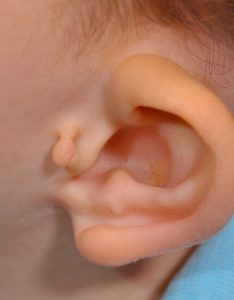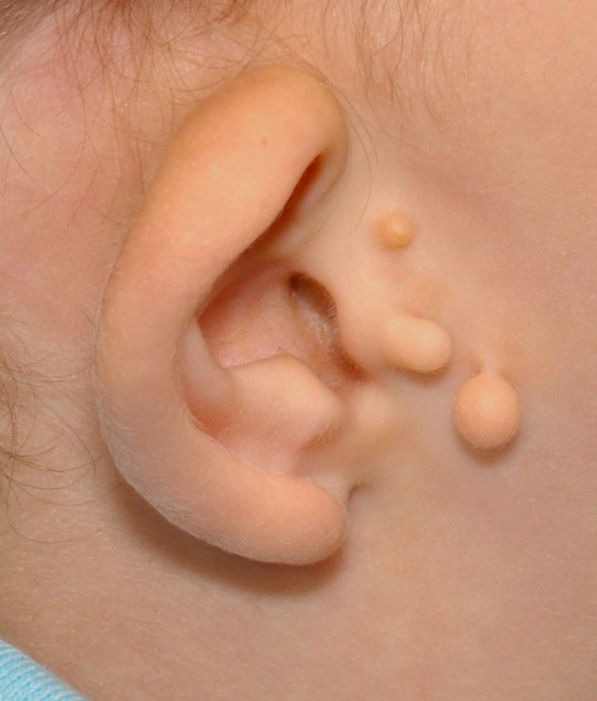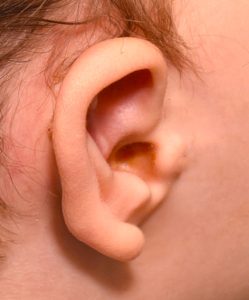Background: The development of the external ear is one of the most complex embryological features in the head and neck region. Its origin is from six mesenchymal proliferations of the 1st and 2nd pharyngeal arches, also known as the auricular hillocks, which initially appear at six weeks in utero and is fully formed by the twentieth week. It is the complexity of how these six hillocks come together to form the visible external ear that is truly remarkable. But because of this complexity developmental deformities of the external ear are common.
One of the most common congenital external ear anomalies, and the most benign, is that of ear tags. These are skin, skin and fat or combined skin, fat and cartilage growths that occur most commonly in front of the formed external ear. They represent either breakaway small segments of hillocks that failed to stay fused to the larger developing ear or hillock remnants that never made it to merge with the main developing ear. They can appear as single or multiple tags and can be on one side of the face or both. Multiple ear tags tend to occur when the external ear also has a deformity as well.

Under general anesthesia the cupped ears were treated by a setback otoplasty technique to reshape the cartilaginous portion of the ear. The skin tags were elliptically excised, some with a small cartilage segment that went deeper into the subcutaneous tissues.

Most preauricular skin tags are removed early in life along with whatever ear reconstruction is needed. But even if ear reconstruction is not required, it behooves the healing process to do it early in life before school age to optimize the post-excisional scarring.
Case Highlights:
1) Congenital ear deformities are often associated with ear tags which appear in the preauricular region.
2) Excision of preauricular skin tags is often associated with the need for removing a deeper cartilage component of the tag.
3) When done early the scars left from preauricular skin tag excisions can be fairly minimal.
Dr. Barry Eppley
Indianapolis, Indiana





